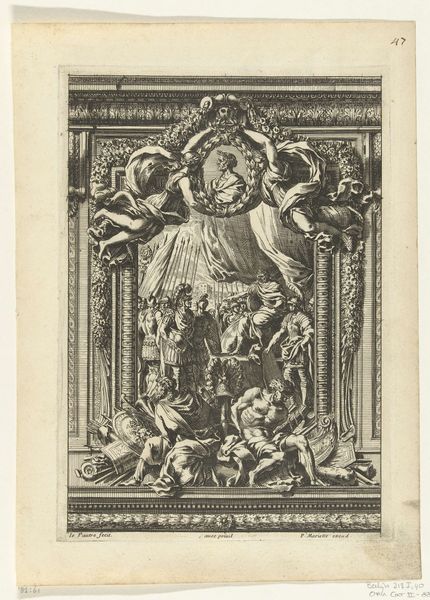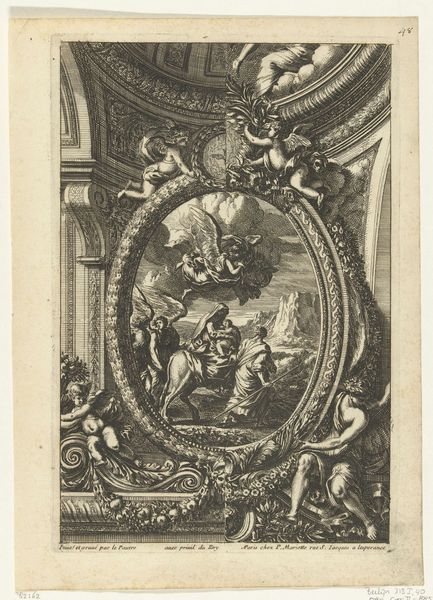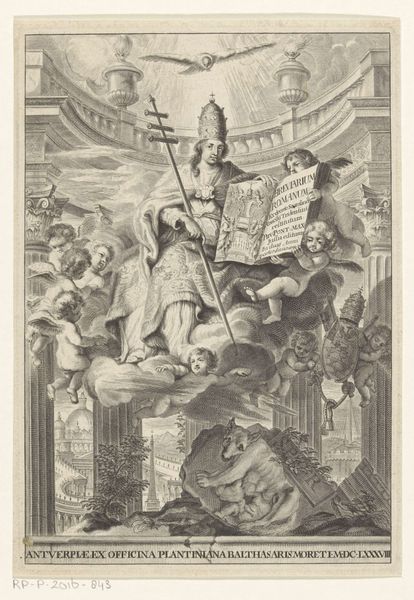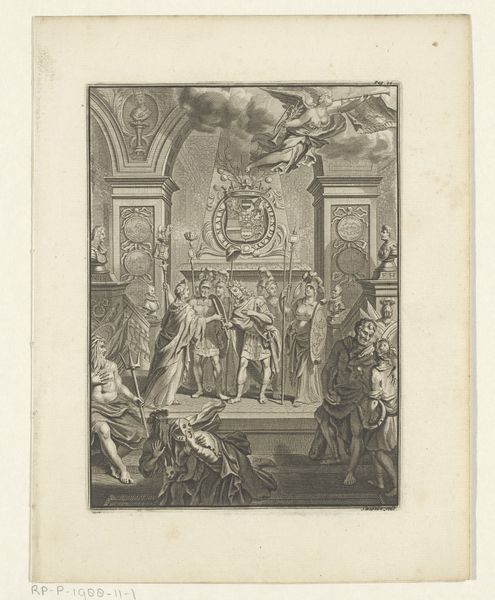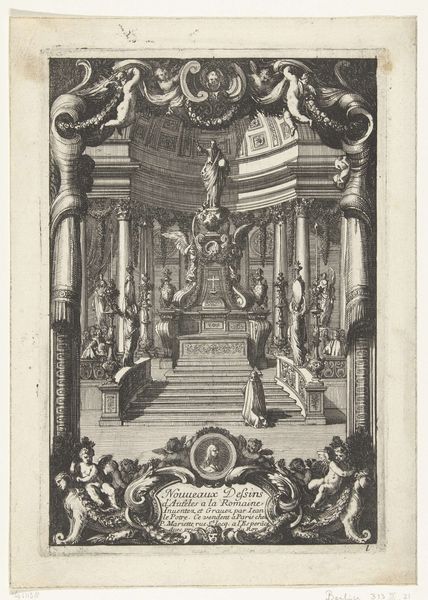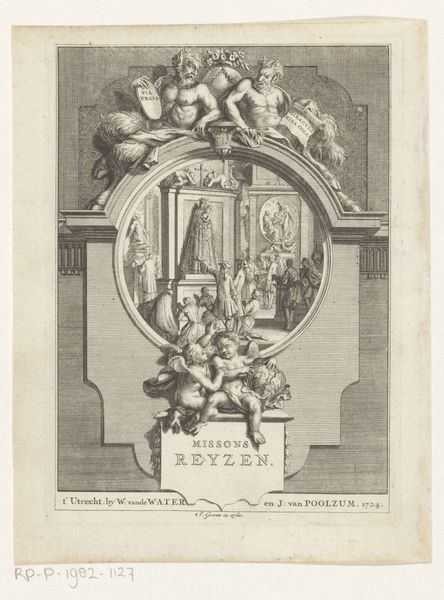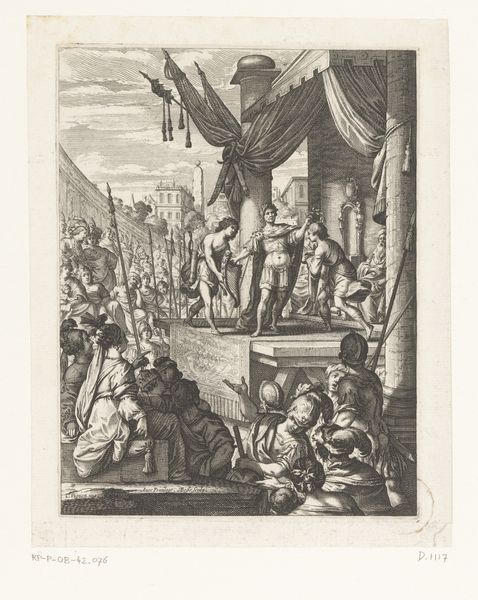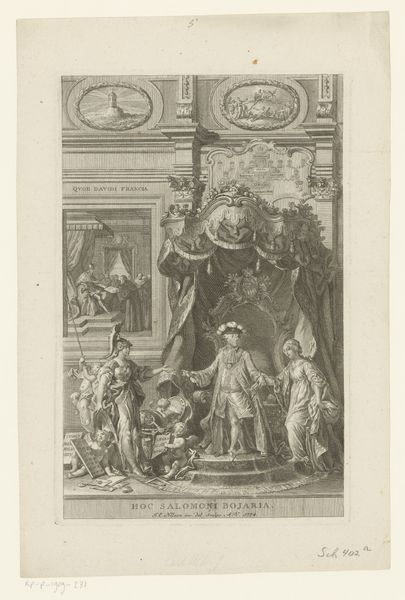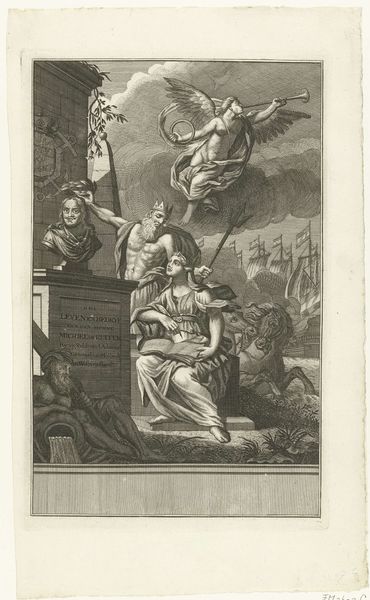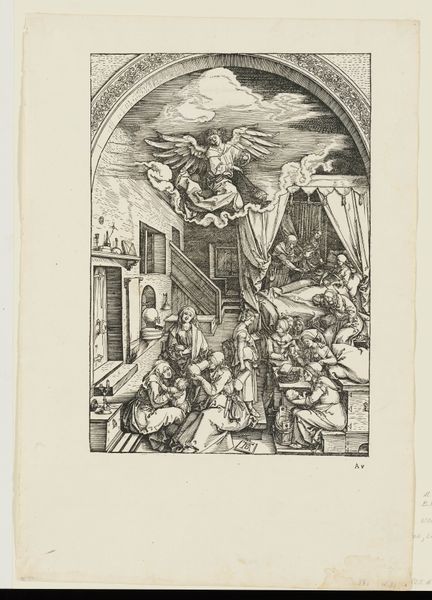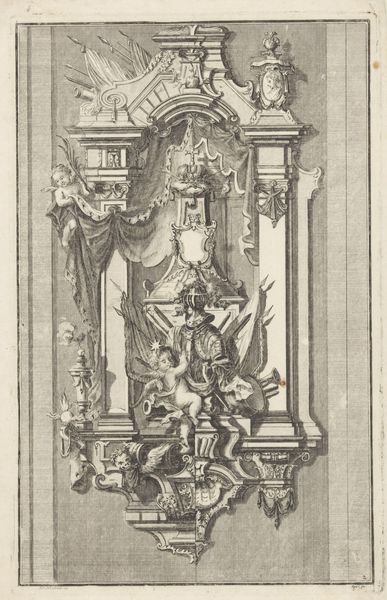
Allegorische voorstelling met personificatie van de Rooms-katholieke kerk 1693
0:00
0:00
martinbouche
Rijksmuseum
print, engraving
#
allegory
#
baroque
# print
#
old engraving style
#
figuration
#
form
#
history-painting
#
academic-art
#
engraving
Dimensions: height 208 mm, width 147 mm
Copyright: Rijks Museum: Open Domain
Curator: Let’s examine this intriguing 1693 print, now held at the Rijksmuseum. It’s titled "Allegorische voorstelling met personificatie van de Rooms-katholieke kerk," created by Martin Bouche. What are your initial thoughts? Editor: It's incredibly busy! There's a strong vertical pull from the figure at the top down to what looks like a monstrous form at the base, an emotional landscape of triumph over what looks like internal darkness. What is it about for you? Curator: From my perspective, this print exemplifies the fraught dynamic between religious authority and social change at the close of the 17th century. Here we have an allegorical figure, seemingly personifying the Roman Catholic Church, which at that point, as an institution, still held substantial sway, especially politically and culturally. This image reflects the Church's attempts to solidify and project its influence. Editor: I see the figure holding what appears to be scripture and a cross-staff, clearly representative of power, positioned above putti, a cityscape, and figures clashing below... Is that meant to represent subjugation of forces against the Roman Catholic Church? Curator: Precisely. Given the era, religious turmoil across Europe following the Reformation and, later, scientific and philosophical disruptions threatened the Church’s traditional dominance. Works like this are products of an internal war. What does it say but "We still stand!". This piece presents a staunchly partisan vision, pushing back against dissenting perspectives of power. Editor: It makes me think about light and shadow—the glow around the figure suggests the triumph of illumination over darker, earthier instincts that drag her downwards. The monstrous figures hugging some object in the depths feel burdened and despairing, almost literally carrying the symbolic weight of their dissent. What is this 'thing'? Is it scripture, the foundation, which both sides see as key? Curator: Quite astute observation. The monstrous figure is probably representative of heresy or general disbelief that has been literally cast below! Editor: The imagery truly becomes the message then. So much weight in carefully crafted depictions meant for maximum, widespread persuasion. The intent is plain. Curator: Indeed, art functioning as direct propaganda. I'm struck again by the unabashed way in which this engraving visually argues for ideological supremacy. Editor: Agreed. Now, observing the cultural and symbolic language on display, I am starting to feel slightly burdened as well!
Comments
No comments
Be the first to comment and join the conversation on the ultimate creative platform.
